The Back Room
The Back Room: Freaking Out or Winding Down?
This week: an art-market Omicron primer, downtown New York dealers on the move, a coveted Magritte appears under Bonhams’s hammer, and more.
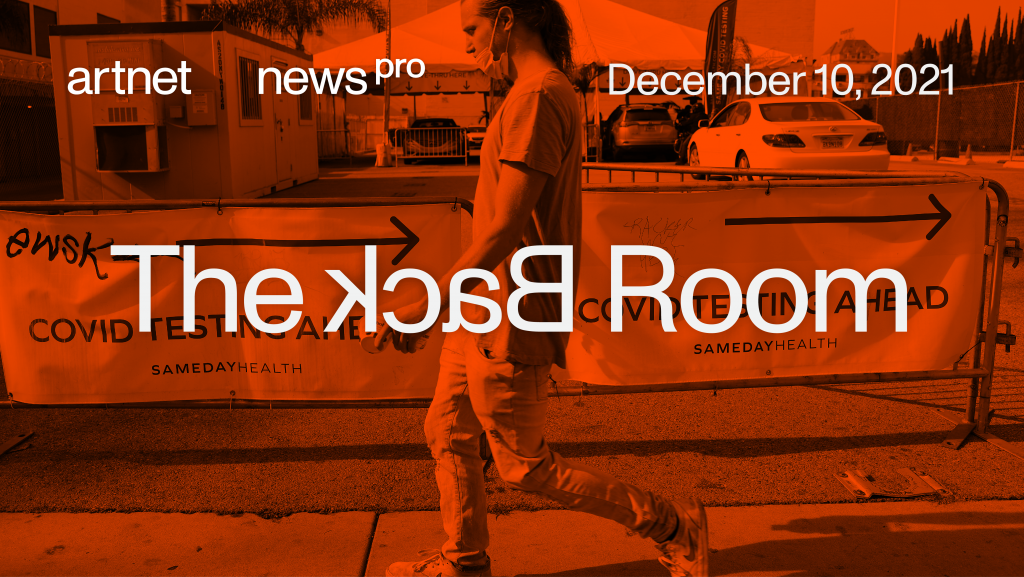
This week: an art-market Omicron primer, downtown New York dealers on the move, a coveted Magritte appears under Bonhams’s hammer, and more.

Tim Schneider

Every Friday, Artnet News Pro members get exclusive access to the Back Room, our lively recap funneling only the week’s must-know intel into a nimble read you’ll actually enjoy.
This week in the Back Room: an art-market primer on the Omicron variant, downtown New York dealers on the move, a coveted Magritte appears under Bonhams’s hammer, and much more—all in a 7-minute read (1,981 words).
____________________________________________________________________________
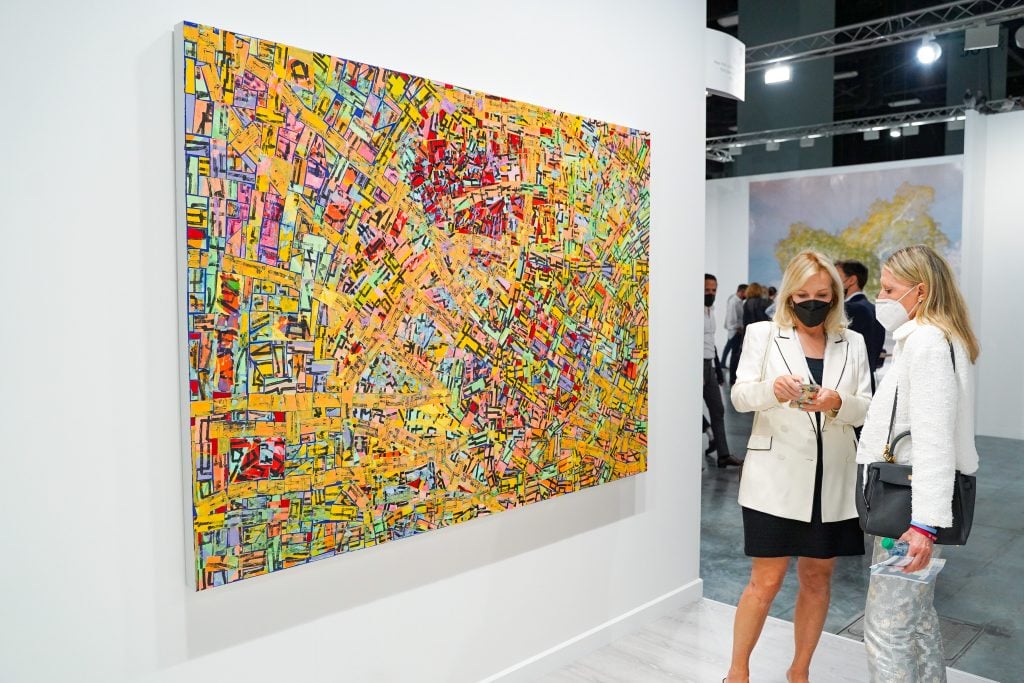
An untitled 2021 painting by Rick Lowe at Gagosian’s Art Basel Miami Beach booth in 2021. (Photo by Sean Zanni/Patrick McMullan via Getty Images).
One way to quietly amuse yourself when visiting friends and loved ones this holiday season is to guess in advance which subject will come up first: COVID or NFTs? Based on my experience in Miami last week, however, the odds have been skewed by the recent emergence of the Omicron variant.
Omicron has now been confirmed in at least 45 countries (and 16 American states). With little else but year-end recaps to occupy art-market minds in December, expect it to monopolize an outsize share of your remaining conversations this year.
So I used my column this week to collect the most trustworthy information I could find about the variant and its likely impact on the art economy. Based on the (admittedly early) results, here are the three reasons why—for now—you should stay calm and expect business to continue (mostly) as usual in 2022…
I say “on average” because the immune systems of the elderly and immunocompromised are more vulnerable than those of younger, relatively healthy people. A more transmissible virus is by definition deadlier from that perspective. Set aside this caveat, though, and the picture starts to improve.
Epidemiologist Rebecca Wurtz of the University of Minnesota told the New York Times this Tuesday that “Omicron is more contagious” than Delta based on what she’s seen. Dr. Robert Wachter of the University of California, San Francisco, said there was “not much doubt that Omicron spreads faster than Delta” but added that we’re “still not 100 percent sure why.” Is it better at jumping from unprotected person to unprotected person? Or at causing breakthrough infections among those with an acquired immune response? Or both?
We don’t know yet. Answers are complicated by the fact that, for now, the global community can really only work from results in South Africa, where the population skews young (meaning less likely to get very sick from COVID on average) and is largely unvaccinated. Only about 35 percent of eligible adults there have received all their jabs despite ample supply, with the main drag being vaccine skepticism.
With those caveats in mind, the Atlantic’s Derek Thompson relayed on Wednesday that hospitals in South Africa’s Gauteng province have admitted 50 to 70 percent fewer COVID patients to their ICUs than at the same point in the Delta surge, and “the average hospital patient is being discharged faster than during the Delta wave.” That’s unequivocally good news.
Although she has stressed again and again that we need more data to know for sure, sociologist and New York Times Opinion columnist Zeynep Tufekci (one of our most consistently prescient sources on the pandemic’s trajectory) wrote that our current jabs should still “maintain a good level of protection against hospitalizations and deaths” just as they have when confronted by previous variants.
That is far more important than whether or not Omicron reduces the vaccines’ efficacy against breakthrough infections, whose symptoms have generally proven to be modest at worst. It is also consistent with the fact that viruses evolve gradually, not so swiftly and suddenly that “everyone with protective immunity loses all their protection and the virus regains the full severity associated with full novelty,” as UCLA virology researcher Dylan H. Morris wrote last May.
So don’t freak out about studies that find ghastly-sounding drops in antibody levels. Antibodies only prevent initial infection; they have little bearing on illness severity.
Besides, small vaccine studies released after my column published now suggest that previously infected patients with two vaccine doses, as well as never-infected patients with three doses, still have a large arsenal of neutralizing antibodies to fight off Omicron. So don’t get scared, get boosted!
By the close of trading Monday, the S&P 500 “had recovered nearly all of its losses” since news of Omicron screamed through media outlets in late November, according to the New York Times Dealbook. U.S. exchanges saw big gains in energy, industrials, airlines, cruise-ship operators, hotels, and other positions tied to the continued reopening of the economy per analysts at CNBC.
Monday’s edition of Dealbook also noted that “European markets were flat to up, as investors appeared to grow less worried about the latest coronavirus variant.”
It’s likely these results are a sustainable trend rather than a brief anomaly. Over the course of the pandemic, the S&P has dipped less during, and recovered faster from, every subsequent macro scare about COVID.
This trend should translate to the art market too, given that Miami Art Week sales were robust across fairs during what now looks to have been the most pessimistic portion of the investor class’s Omicron-response cycle. If the worst of the panic couldn’t hold back last week’s spree, my guess is that art sellers are going to be just fine.
____________________________________________________________________________
Although we find out a little more about Omicron every day, experts say that we won’t have reasonably robust international data before late December or early January. Until then, everything we’re seeing could just be small sample size theater.
Still, understanding that we in the art trade must remain vigilant should not prevent us from also seeing legitimate reasons for optimism—just as seeing legitimate reasons for optimism should not prevent us from remaining vigilant.
____________________________________________________________________________
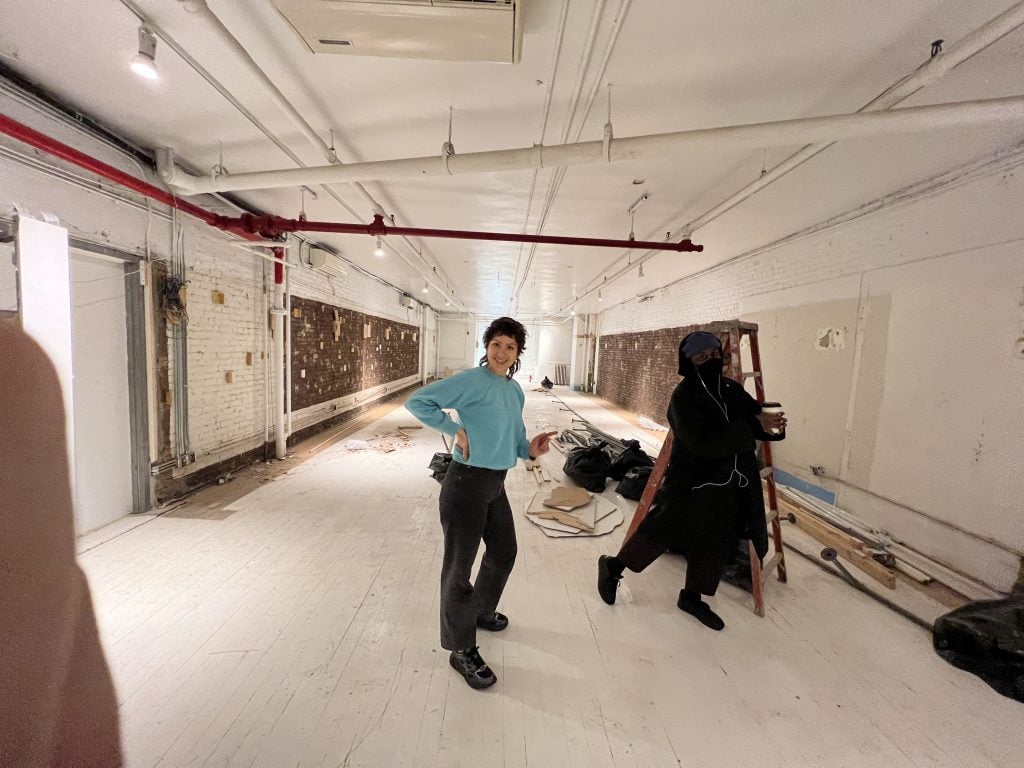
Artists Haley Josephs and Quay Quinn Wolf and Jack Barrett’s new space, under renovations.
The latest Wet Paint highlights three downtown New York galleries expanding into Tribeca/NoHo. Deep Chinatown neighbors Marinaro and Jack Barrett Gallery are both moving to the increasingly popular corridor to the north, while Queer Thoughts is “upgrading from a windowless, 12-by-12 office” into a space twice the size in the same building at 373 Broadway.
Here’s what else made a mark around the industry since last Friday morning…
Art Fairs
Auction Houses
Galleries
Institutions
NFTs and More
____________________________________________________________________________
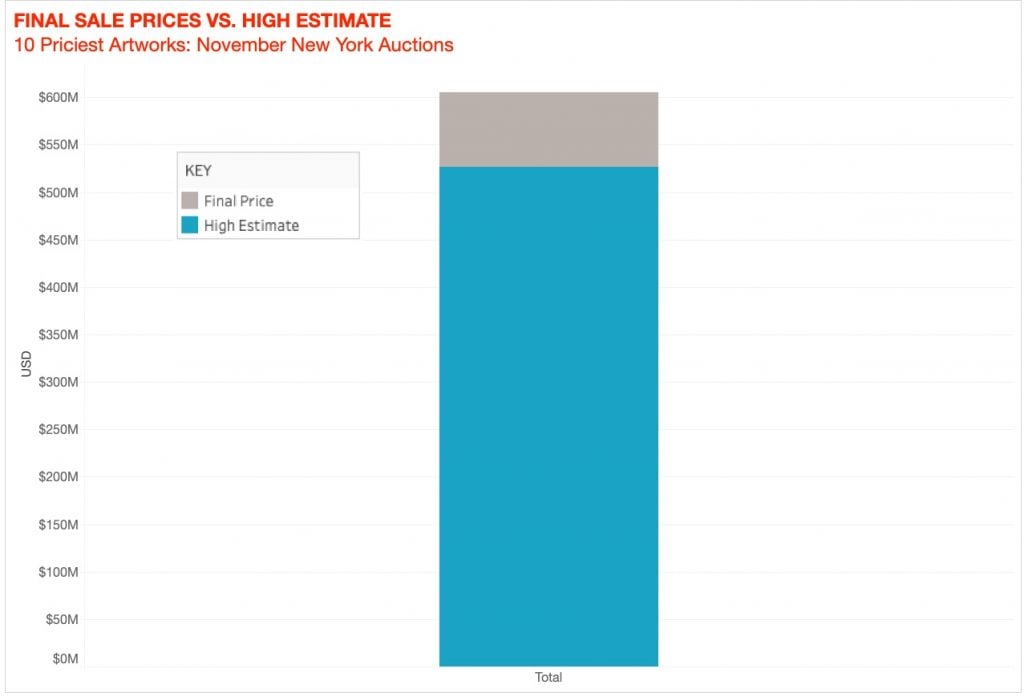
© 2021 Artnet Price Database and Artnet Analytics.
The 10 most expensive works sold during last month’s fall auction cycle in New York carried a combined high estimate of $527 million (counting three works whose expectation was “in the range of” or “in excess of” a single dollar figure). Yet bidders still spent their way higher on the group, to $605.5 million in total.
Outperformance was not a given for each work, however. While none of the 10 lots landed beneath their individual low estimate, only four beat their loftiest projection by a larger percentage than the buyer’s premium at the house that sold them. (Works hammering for north of $6 million incur fees of 14.5 percent and 13.9 percent, respectively, at Christie’s and Sotheby’s NYC locations, where all 10 of these works traded).
Is this a triumph of expectation-setting by the houses, or more proof that live bids have largely been financially engineered out of major evening auctions? How about both? And don’t expect that to change next year either.
____________________________________________________________________________
“We’re here to celebrate a new era, one that is not dictated by the colonizers but that empowers all to have a voice.”
—Alt-auctioneer CK Swett emceeing a live event held by Metapurse, the crypto-fund that owns Beeple’s Everydays: the First 5000 Days… before he accidentally unleashed a rain of boos from attendees who only came to see a D.J. set from Swedish EDM star Alesso. (Artnet News)
____________________________________________________________________________
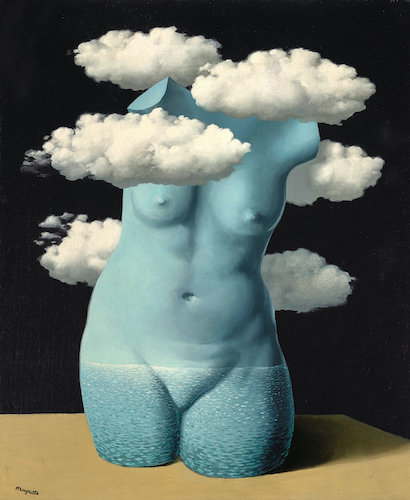
René Magritte, Torse nu dans les nuages (ca. 1937). Courtesy of Bonhams.
____________________________________________________________________________
Estimate: $6 million to $9 million
Sale Price: $10 million
Sold at: Bonhams, New York
This Tuesday, Bonhams held a dedicated auction of 13 works from the collection of Swiss-born artist-turned-philanthropist Amalia de Schulthess. The crown jewel of the sale (which found buyers for every work and brought in more than $15.2 million) was Magritte’s Torse nu dans les nuages. The painting didn’t just go under the hammer for the first time ever; it had not even been publicly seen in the last 70 years, according to the house.
Those attributes would have left many, if not most, market pros expecting the piece to be consigned to Christie’s, Sotheby’s, or Phillips. Instead, the painting is a reminder that the Big Three’s less publicized competitors can still play to win when it comes to multimillion-dollar works with remarkable provenance.
“Other houses may offer more artworks at this price point,” said Molly Ott Ambler, Bonhams senior vice president and international director. “However, Bonhams brings to bear decades of relationships and connoisseurship while offering bespoke attention to masterpieces at this level.”
For instance, Bonhams toured Torse nu dans les nuages to Asia, Europe, and throughout the U.S. ahead of the auction, enabling months of “high-touch engagement with collectors” around the globe—just as larger houses increasingly do for trophy works. (Bonhams announced on the day of sale that it had secured a third-party guarantee for the work, but a spokesperson for the house stated that this had no bearing on the consignor’s decision about where to sell.)
The results speak for themselves. Chalk it up as just one more way that Magritte has recalibrated art lovers’ perceptions about the world around them.
____________________________________________________________________________
Additional reporting and writing by Naomi Rea.